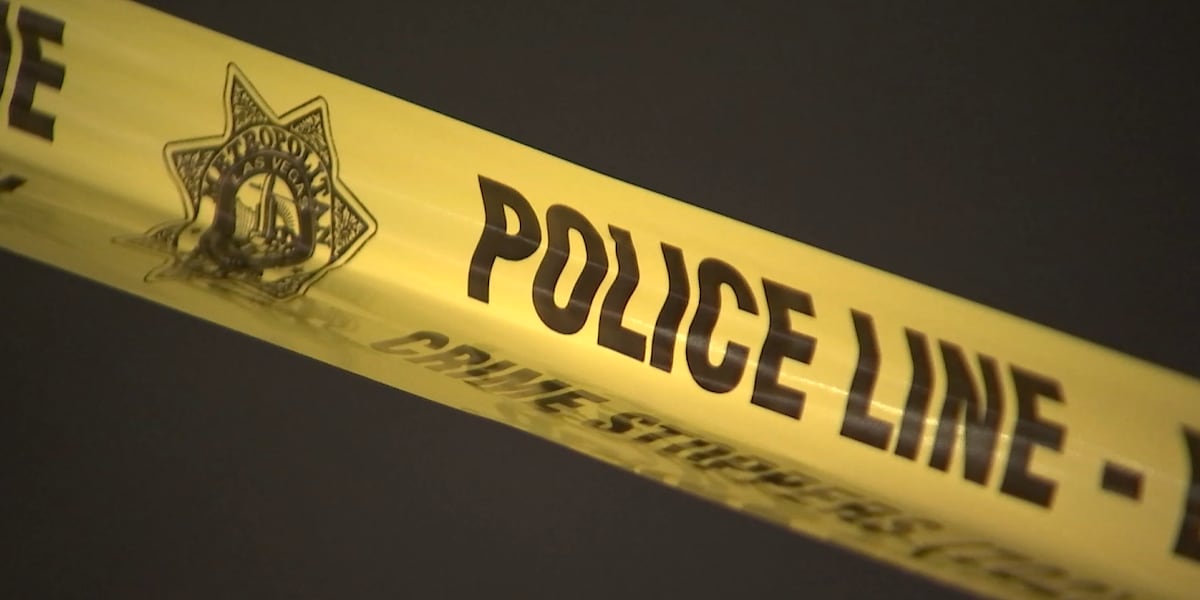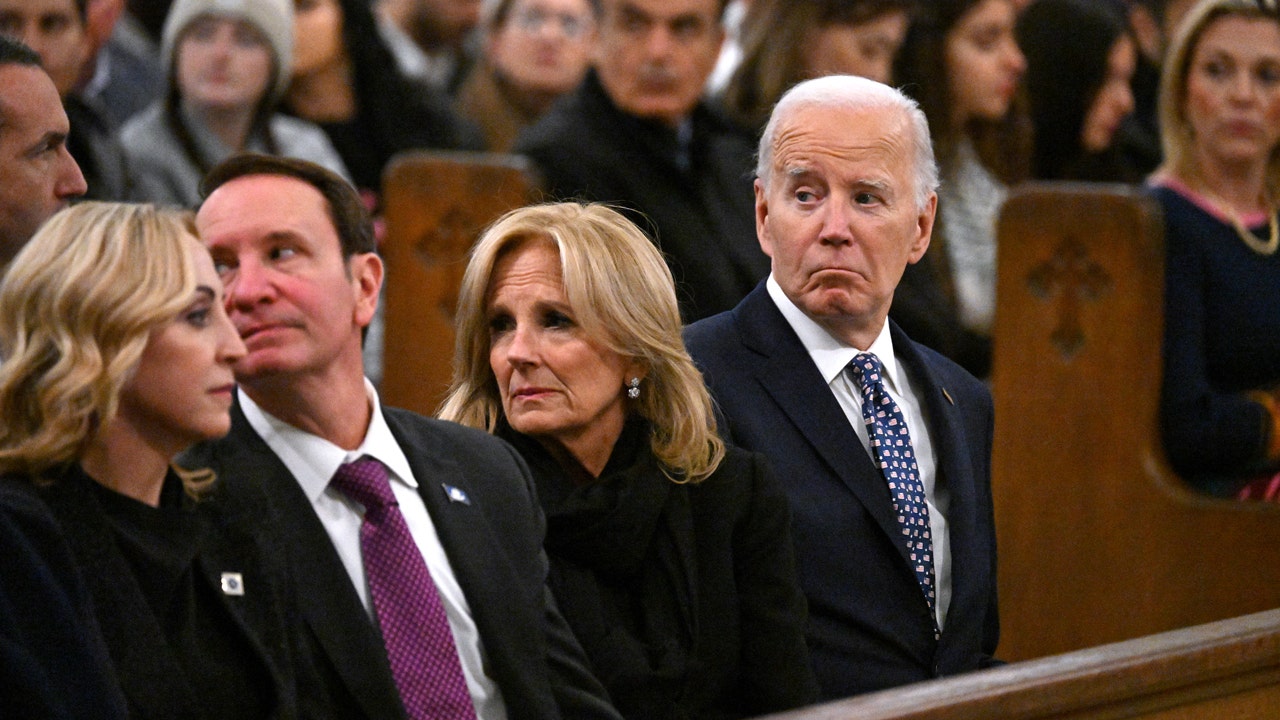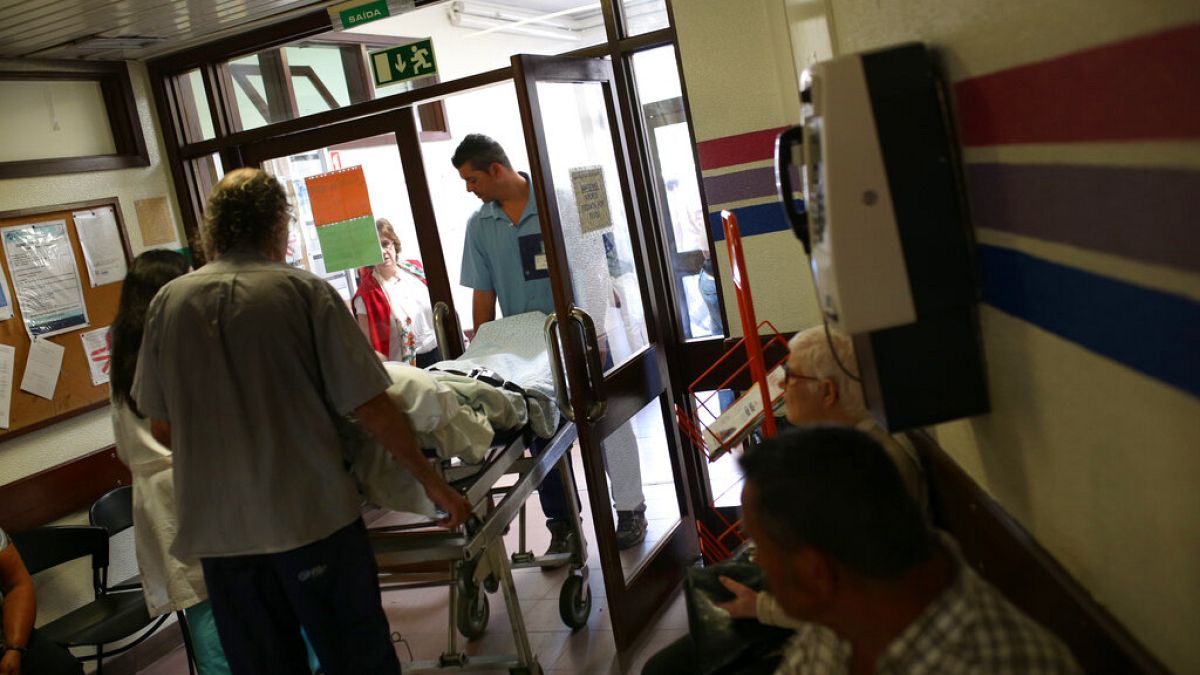Nevada
Air Force Veteran Tells the Story of Hidden Health Risks at Nevada Test Site

Dave Crete was sitting around with some fellow Air Force veterans he worked with almost three decades prior on the Nevada Test and Training Range when they broached the topic of tumors.
It was an unexpected conversation among the eight, but an enlightening one, said Crete, who found out six of his former crewmates had undergone tumor removal procedures. The Las Vegas resident said doctors had found more than 20 lipomas on him, including one that was the size of a grapefruit and surgically removed from his back.
The issues even extended to their families, with wives becoming sick, reporting multiple miscarriages or giving birth to children with defects or illnesses, Crete said.
He discovered the common thread between all these medical complications was exposure to radiation while working at the Nevada Test and Training Range.
Though veterans can usually get benefits to help with costs assumed from injuries related to service, Crete and many of his former crewmates can’t because their jobs were classified, meaning they can’t prove to the government that they were exposed to radiation.
Now, he’s working with federal lawmakers and producing a documentary to raise awareness about this group of impacted veterans.
“Our challenge is this: We’re a group of people that exists that nobody knows about, that nobody knows what we did, and nobody knows about where we worked,” Crete said. “It’s the only way I could figure out to effectively tell people our story and let them see it because there’s no Twin Towers; there’s no plane crash; no ship (got) sunk; there’s nothing to tie our story to, and so we have to create it, and that’s what we’ve been doing, creating a vehicle, if you will, to help us tell our story.”
Crete began the work in 2023 after forming his nonprofit The Invisible Enemy, a Las Vegas-based organization advocating for the thousands of military personnel that worked on the Nevada Test and Training Range and have been affected by exposure to toxic radiation.
The 2.9-million-acre Nevada Test and Training Range — formerly the Nevada Test Site — was established northwest of Las Vegas after World War II as a military testing site for nuclear weapons and now serves as “the largest contiguous air and ground space available for peacetime military operations,” according to Nellis Air Force Base.
Many people commonly refer to part of the range as Area 51, rumored to house top-secret U.S. military equipment and operations.
Crete worked at the Nevada Test and Training Range for four years, ending his service in 1987. He remembers testing being done near the gate where he was stationed. At the time, he and his crew members “didn’t know that’s what you could see,” he said, and were completely unaware of the issues that would follow them due to radiation exposure even when their service ended.
Crete said he would usually work for days at a time — sleeping, eating and drinking water while on the test site — and then go home to his wife, unknowingly bringing his contaminated clothing to be washed.
After discovering at the reunion how many veterans from the Nevada Test and Training Range ended up sick, Crete went digging for answers and found an environmental assessment of the Tonopah Test Range dated December 1975. It was conducted by the Department of Energy and Sandia National Laboratories.
The 89-page document stated that “The impacts of normal operation of the Tonopah Test Range consist of scarring of the land by roads and shrapnel impact, the use of resources and energy, noise, debris, some scattered toxic or radioactive materials, and economic effects on nearby communities.”
Three areas of the test site had been contaminated with plutonium from tests carried on in 1963, but the report stressed that “there is no indication of migration of this surface contamination outside the (site’s) fence, let alone outside the Range; nor is there any indication that this plutonium has entered significantly into local biological systems or food chains.”
“What they decided was that the benefits to national security, the benefits to having a prolific nuclear force, outweighed the future environmental liabilities … the government decided that the juice was worth the squeeze, and none of us knew,” Crete said. “You just never thought that the government would have actually put you somewhere knowing that eventually there was a good chance you were going to end up sick.”
Crete said he had since been in contact with “hundreds and hundreds” of veterans, with more than half reporting some sort of serious health condition among them or their families.
To raise awareness of the plight these veterans have faced, Crete decided he wanted to create a movie. He made an account on film industry website IMDb and began emailing those who were affiliated with projects like the 2023 “Oppenheimer” movie and the 2023 “Downwind” documentary.
He eventually received a response from a camera operator for “Downwind,” who connected him with the documentary’s directors, Mark Shapiro and Douglas Brian Miller. Crete then hired Backlot Docs — the feature documentary production company co-founded by Shapiro and Miller — to create the film.
“The Invisible Enemy” first fundraiser took place in late 2023 and filming began the same year to produce an 11-minute short titled “The Invisible Enemy: Hidden Sacrifice.” It took them three months from conceptualizing to completing the documentary, Crete said, and was uploaded to YouTube this past June.
Crete’s activism hasn’t stopped there.
The Invisible Enemy organization has been working with lawmakers, like U.S. Rep. Mark Amodei, R-Nev., to craft legislation that would help those exposed to radiation at the Nevada Test and Training Range get medical benefits.
On Sept. 16, 2024, Amodei and U.S. Rep Susie Lee, D-Nev., introduced the Presumption for Radiation or Toxin Exposure Coverage for Troops (PROTECT) Act in the U.S. House of Representatives, which would have provided medical care for veterans exposed to radiation and other toxins at the Nevada Test and Training Range by setting a “presumption of exposure” to these toxins starting in 1972.
The bill would have established that anyone who worked at the Nevada Test and Training Range during or after 1972 was presumably exposed to radiation or other toxins. It would cover those not included in Executive Order 13179, which was signed by former President Bill Clinton in 2000 to compensate civilians, their survivors and Department of Energy employees exposed to radiation.
“A quick look at the facts shows that this group of veterans were in serious need of additional support as a result of their service,” Amodei said in a September statement. “As with every veteran, those serving at (the test site) during the determined time frame are entitled to care for illness and injury sustained in the line of service to our nation. I’m glad to lead the charge on this and will continue to push until this change is actualized.”
The House proposal never came to a vote and died with the end of the 118th Congress. It would need to be reintroduced in the new session of Congress.
Crete, who travels to Washington every few months to advocate for the cause, believes they’ll be granted a hearing by Congress this year.
U.S. Rep. Dina Titus, D-Nev., in 2023 introduced the Providing Radiation Exposed Servicemembers Undisputed Medical Eligibility (PRESUME) Act to support veterans exposed to toxic radiation by prohibiting the secretary of Veterans Affairs from requiring evidence of a specific dose of radiation to determine whether someone is a radiation-exposed veteran.
Under the Radiation Exposure Compensation Act (RECA) established in the 1990s, civilians who contracted cancer and other specific diseases from exposure to radiation can receive compensation without having to go through testing required by the Veterans Affairs, said Shane Liermann, deputy national legislative director for the nonprofit organization, Disabled American Veterans.
A veteran must provide proof of on-site participation, radiation dose estimates from the Defense Threat Reduction Agency and a medical opinion supporting that their disease was caused by radiation exposure to receive entitlement for what Veterans Affairs considered “presumptive diseases” caused by radiation exposure.
But Crete claims that he and other veterans working at the Nevada Test and Training Range can’t even prove they were there due to their classified work, which leaves them unable to get any federal support.
Titus, in a statement, said “radiation dose estimates have historically been unreliable, leaving many exposed veterans unable to obtain the compensation they have earned.”
“In the course of their service, like anyone on the battlefield, veterans at the Nevada Test Site put themselves in harm’s way in service to our country. We cannot continue to leave any of them behind. The bureaucratic barriers to care could be easily fixed through my legislation,” Titus in 2023. “Our country’s atomic veterans helped win the peace during the Cold War, and they must be able to access the highest standard of care available.”
Titus’ bill was last referred to the Subcommittee on Disability Assistance and Memorial Affairs on Nov. 8, 2023. It never came to a vote.
Crete’s next moves will be to continue working with Nevada’s congressional delegation to draft and introduce legislation and create a full-length documentary for “The Invisible Enemy.”
He’ll show the short documentary at film festivals in Santa Fe, New Mexico, and New Jersey in the coming months. Meanwhile, filmmakers continue to gather footage for the longer feature.
The Invisible Enemy is also accepting donations on its website and fundraising through film showings in cities like Cleveland and New York. Crete said he would “speak to anybody and everybody that will listen, so I can tell our story, so that we can get the men and women what they need.”
“We all understand there’s risk, but it’s not reasonable to think that you’re going to be stationed out in the desert in Nevada and have a life-threatening illness, simply because that’s where you slept at night. And that’s what we’re trying to recognize and have the government recognize,” Crete said. “We got to participate in the coolest thing going that the military had, and I believe that there is a way to tell the story of this group of people and what they did and what we accomplished without violating our security. But it’s a story I just truly believe needs to be told, the good and the bad.”
___
(c)2025 the Las Vegas Sun (Las Vegas, Nev.)
Visit the Las Vegas Sun (Las Vegas, Nev.) at www.lasvegassun.com
Distributed by Tribune Content Agency, LLC.
Story Continues
© Copyright 2025 Las Vegas Sun. All rights reserved. This material may not be published, broadcast, rewritten or redistributed.

Nevada
51-year-old North Las Vegas man dies in Red Rock Canyon crash
LAS VEGAS, Nev. (FOX5) – Nevada State Police said a 51-year-old North Las Vegas man died in a crash at Red Rock Canyon.
The crash happened Thursday, Jan. 2 at 2:25 p.m. near Red Rock Canyon and Fossil Ridge roads.
Police say Shawn Raymond Pierson drove too fast during a curve and drove left of center into the eastbound travel lane as traffic approached.
Pierson struck a broken paddle marker base and overturned. Police say he died at the scene.
The investigation is being conducted by the Nevada State Police Highway Patrol – Traffic Homicide Unit.
2025 Year to date: The Nevada State Police Highway Patrol Region 1 (Southern Command) has investigated 1 fatal crashes resulting in 1 fatalities.
2025 fatalities details preliminary and may change/be updated based on final investigation.
Copyright 2025 KVVU. All rights reserved.
Nevada
Missing teen who vanished after family dispute believed to be found dead in desert

A body found in the Nevada desert is believed to be a teenager who went missing last week after a family dispute.
Police in the city of Henderson said in a statement that the body matches the description of 17-year-old Jennaleah “Jenna” Hin.
Hin was reported missing on December 30, 2024, after she left the home in Henderson following a family issue.
“It’s just a normal family dispute, you know, that teenagers have with their parents. Nothing out of the ordinary,” Mark Speer, Red Rock Search & Rescue commander said.
She said something to the effect of, “You don’t have to worry about me anymore,” according to Speer, the Las Vegas Review-Journal reported.

Hin did not have a phone or money on her the night she disappeared, her family members said, according to CBS affiliate KLAS.
On Sunday, Henderson police responded to an area of the desert just east of Desert Sunflower Circle and Spanish Needle Street around 10:42 a.m. after a K-9 unit was alerted to her scent, officials said. They discovered a “deceased female” who they say matches the description of Hin.
According to their “preliminary investigations, there does not appear to be signs of foul play,” police said.
The Clark County Coroner’s Office will release official identification of the body, pending notification of next of kin.
A cause of death has not been revealed.
The discovery of the body comes just two days after her mother pleaded for the public’s help in finding the teen at a press conference on Friday.
“Jenna, wherever you are or whoever you’re with, I just want you to come home,” Hin’s mother, Jennifer Swanson, said, according to the Las Vegas Review-Journal. “I want you safe. We love you so much — please come home.”
On Sunday afternoon, her mother shared a photo of Hin on her Facebook page, writing “Jenna, I love you… Where are you, who are you with, who has you, please come home…”
Nevada
Henderson police investigate possible remains of missing 17-year-old girl

LAS VEGAS, Nev. (FOX5) – Henderson police are investigating the possible remains of a 17-year-old girl who went missing last week.
According to police, the remains were discovered and reported around 10:42 a.m. in the desert area of Desert Sunflower Circle and Spanish Needle Street.
Arriving officers noted that the remains matched the description of Jennaleah Min, who was reported missing last Monday, Dec. 30, 2024.
An initial investigation found that there are no apparent signs of foul play, though it’s still in its early stages.
Parents of Foothill High School students received the following letter over the weekend:
The coroner has not identified the remains yet, though FOX5 has reached out for confirmation.
This is a developing story, check back later for updates.
Copyright 2025 KVVU. All rights reserved.
-

 Health1 week ago
Health1 week agoNew Year life lessons from country star: 'Never forget where you came from'
-
/cdn.vox-cdn.com/uploads/chorus_asset/file/24982514/Quest_3_dock.jpg)
/cdn.vox-cdn.com/uploads/chorus_asset/file/24982514/Quest_3_dock.jpg) Technology1 week ago
Technology1 week agoMeta’s ‘software update issue’ has been breaking Quest headsets for weeks
-

 Business6 days ago
Business6 days agoThese are the top 7 issues facing the struggling restaurant industry in 2025
-

 Culture6 days ago
Culture6 days agoThe 25 worst losses in college football history, including Baylor’s 2024 entry at Colorado
-

 Sports6 days ago
Sports6 days agoThe top out-of-contract players available as free transfers: Kimmich, De Bruyne, Van Dijk…
-

 Politics4 days ago
Politics4 days agoNew Orleans attacker had 'remote detonator' for explosives in French Quarter, Biden says
-

 Politics4 days ago
Politics4 days agoCarter's judicial picks reshaped the federal bench across the country
-

 Politics2 days ago
Politics2 days agoWho Are the Recipients of the Presidential Medal of Freedom?















